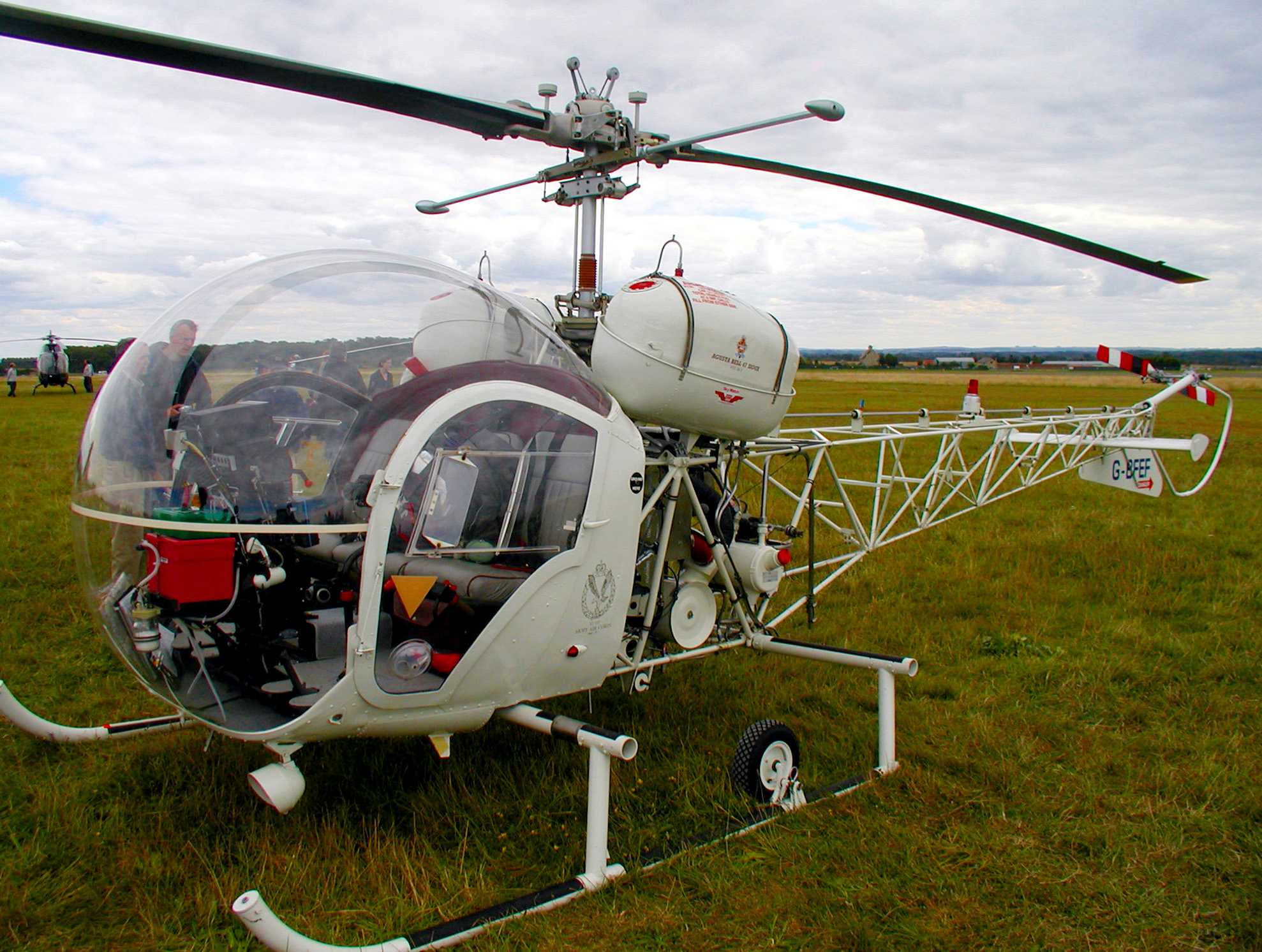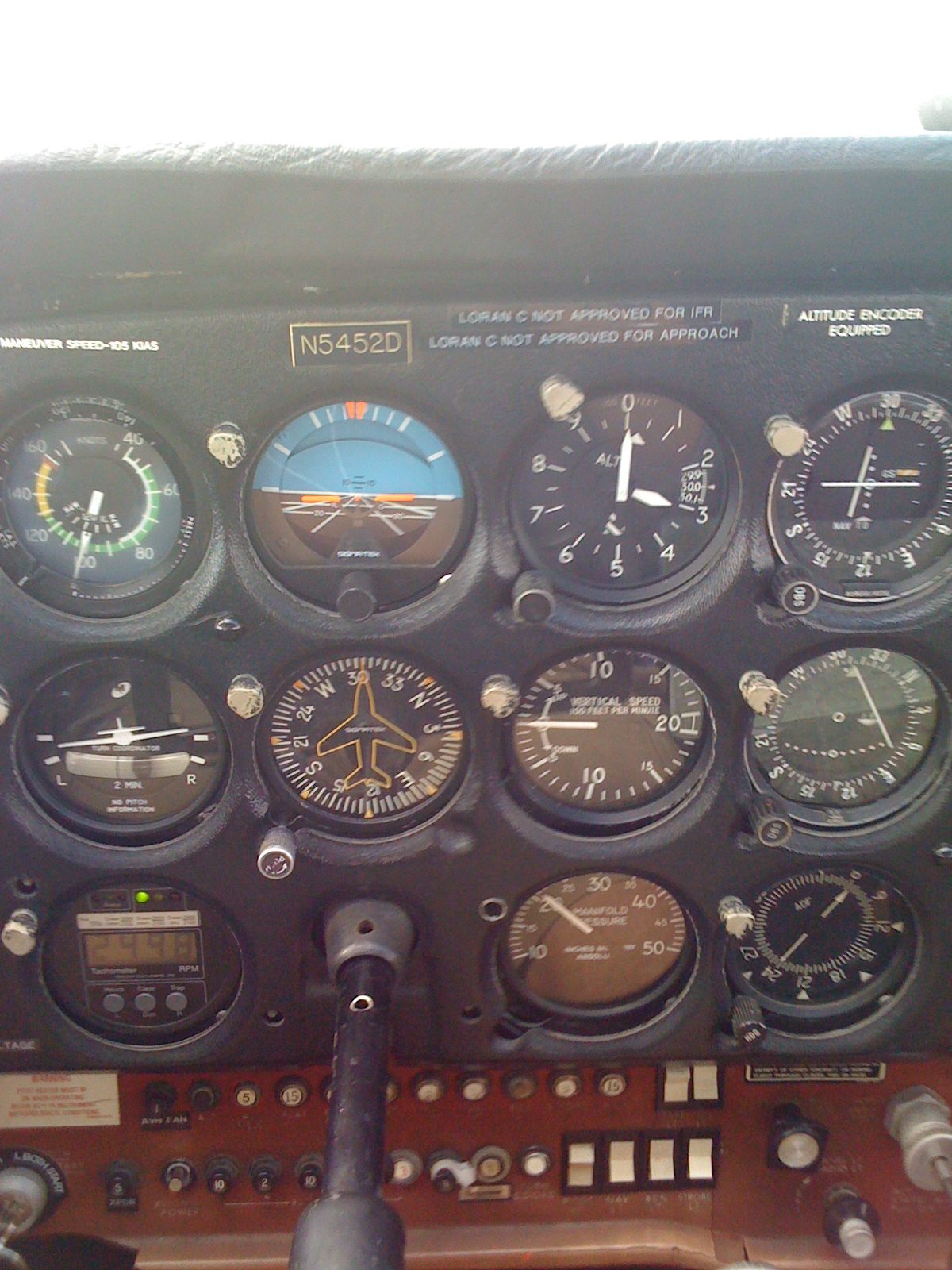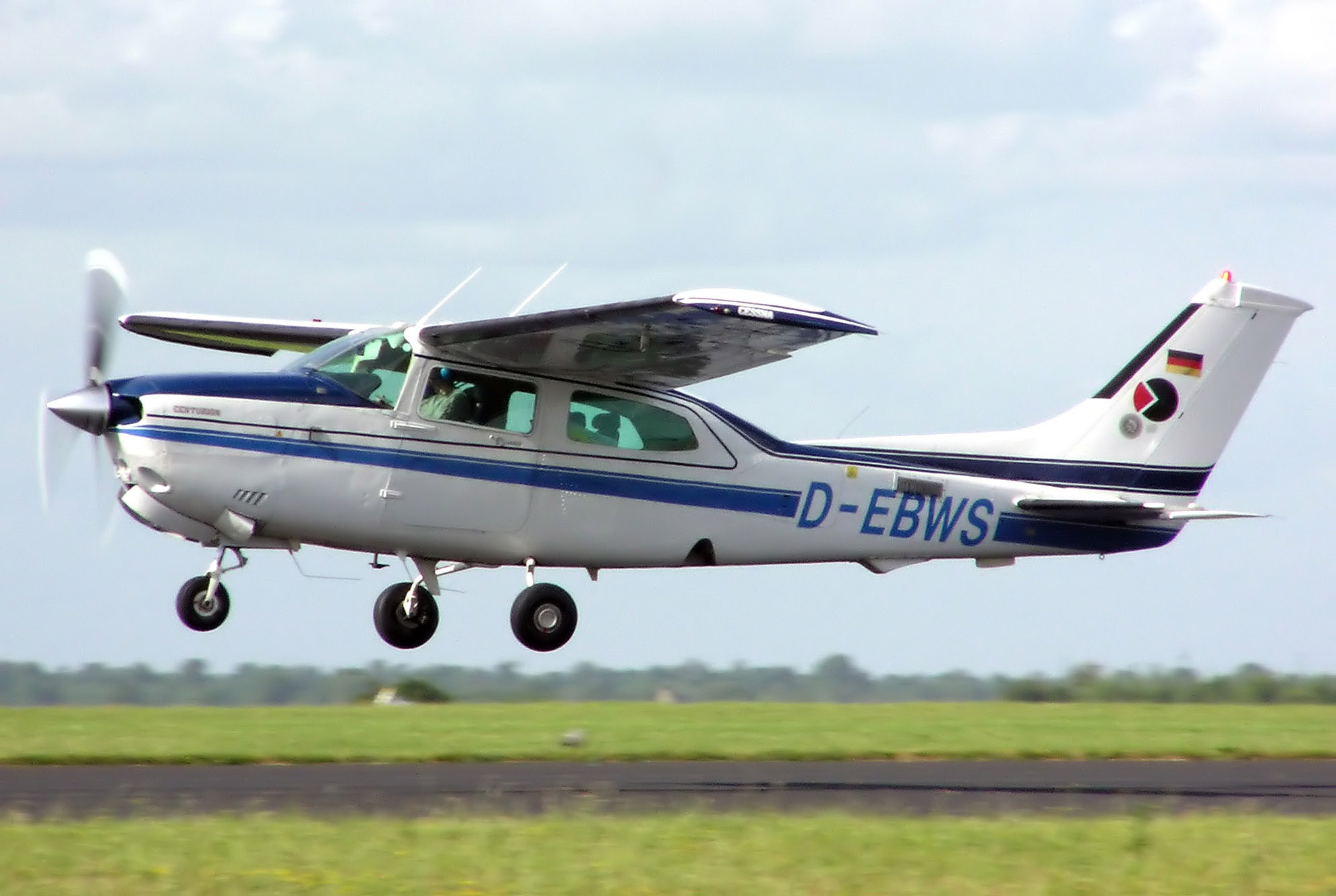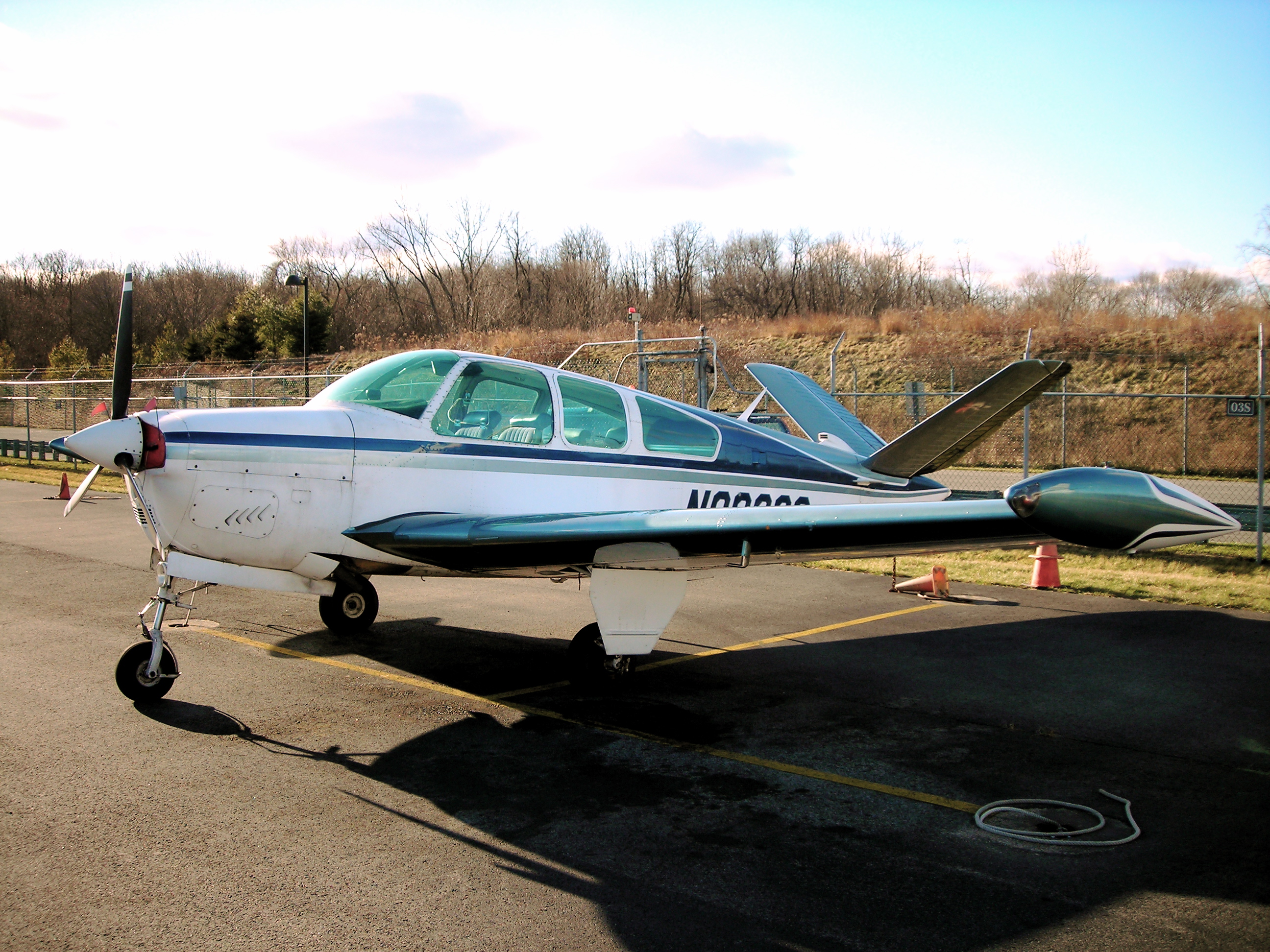The decision was made, we are going to sell our Apache and buy a new plane. But what? It's a buyer's market right now, and we're looking for a potential "forever plane." So it would be far better for us to take our time and figure out what plane we should really go after.
The self-defeating cycle in a buyer's market
I've spoken to other pilots in the past and present, and the decision to buy a plane seems to follow this pattern:
- Decide to buy a plane and set a basic budget.
- Find an otherwise unaffordable plane that for some reason is at the top end of your budget
- The budget has changed and you're now looking at those planes, convincing yourself you can afford it.
- Find the perfect plane in #3.
- Realize that you were delusional about the budget and get frustrated.
- Return to #1.
This is the cycle that causes a search for a plane like this:
Leads to a plane like this:
 |
| Just tryin' to be like Mike. |
I do feel sad for those who end up with a plane they can afford to own but not afford to fly. It is almost a trap I've found myself in.
Doing this process (steps 1 through 6) several times led us to a different approach; one that may seem obvious, but as any aircraft owner can tell you: rarely happens. We were going to define the mission, in full, and look for a plane to handle our requirements. Once we have a pool of planes, we will see what (if any!) meets our budget.
Defining the Mission
I'll split this into categories, as it's really the first way anyone should go about it: Performance - Speed, Weight, and Endurance; Comfort - Pilot, Passenger; Capability - FIKI, Hard IMC, and Mountains/Water
Performance:
The Speed of an aircraft is probably one of the first things most pilots looking to move up are going to notice. Who hasn't thought about what life would be like if only their plane was a few knots faster? I had this little itch right away, but after running the numbers on the main flights I'd be doing, it just wouldn't make sense to spend money with this as the deciding factor.
My Piper Apache will fly 135kts Indicated Airspeed at 7,500' MSL. This turns into a true airspeed of about 150kts. So assuming zero wind, the Apache will fly from KUGN to KGVL in roughly three and a half hours. A quick comparison to
this chart by Diamond Aire puts an Aztec at 180kts. We'll assume that's the true airspeed at optimum altitude (as there's no way I'd advertise my Apache to be 150kts straight out, but that's what it trues out before power attenuation).
A flight at 180kts on that same 525nm trip turns into right about three hours. It's important to note that for this half-hour gain you're feeding fuel to an extra four cylinders regardless of the number of passengers you're carrying. Also, half an hour doesn't make or break a weekend trip.
Our modest cruise rate of 135kts indicated is definitely enough for our mission. Our favorite far places to go are: Denver/Colorado Springs, Montreal, and Atlanta. All of these are going to be just four to five hours even at 135kts ground speed. Perfect for a weekend or long-weekend trip.
If you're curious about the reported performance of any General Aviation aircraft I strongly recommend
Rising Up.com for both their browsing and search criterea.
 |
| The ASI is at 115kts during a slow sightseeing flight |
Gross Weight and useful load are one of our more important factors. Almost every flight we've done has either been with my wife's sister and her husband, or with my sister and her husband. When my son was smaller (and wow is he big: 26 months old and 37" tall), he was an easy lap-child to take along with four adults. Now, we're going to be filling out even more seats as my average flight looks like four adults and three children. Given the weights of my passengers, and allowing for room to grow on the children up to about 6 years or so: I need 900lbs of useful load for passengers, minimum.
On top of that, we'll be bringing a couple car-seats or luggage. It's important for me to note that on the long-stay trips that aren't with family we tend to go out and buy some clothes at a goodwill, walmart, or craigslist for the week and then donate it to a local shelter. This significantly cuts down on the weight we carry for 5+ people. So, at the very least, we are looking at a minimum of 1000lbs useful load plus enough fuel for four hours (at least halfway to our destinations).
 |
| My wife with my son on his first flight (3 months old), family trips are a must. |
The fuel Endurance of our ideal plane grew without bound. By the time my wife and I were discussing potential trips, we were literally discussing the ability to fly to Europe via Greenland without having to install special ferry tanks. It's so fun to dream, but the only way to accomplish our goals is in the waking world. It'd be crazy fun to do, and we hope to one day, but buying a plane for a trip we hope to do "one day" is simply madness! More on this later, it was actually a spot where we got stuck. We have friends in London, Denmark, and Sweden, so visiting them one day and being able to hop around would be amazing. I'm already starting to ramble about it again!
When you're looking at buying a plane, find your weakness and set an iron-clad limit. This is where we kept creeping up, as silly as it may seem. We would daydream about Europe, The Bahamas, Aspen Colorado, etc. Holy crap. Then I had a nice chat with some guys based out of Colorado Springs and they helped me snap out of it. One of them flew a four-engine air transport jet out of Aspen, and he said that it was always only half full (which lead to passenger complaints when they said they were out of seats, even though the plane was only half full!). So again, FIND YOUR PERFORMANCE CREEP AND CAUTERIZE IT OFF. For some it's speed, for some it's useful load, but eventually every pilot will seek performance gains until they find something they can't afford to fly.
Wow that was some rambling! So, after some real soul searching, we decided that our real ideal endurance is one that can make it at least half-way on a single tank of fuel with our typical load. This was probably the most realistic limit we set on any of our requirements. It's practical, and we can measure it against all other performance benchmarks.
Since our longest typical-mission flight is about 700nm, we need at least 350nm plus 45 minutes of reserve after 1000lbs of useful load. Now we're getting somewhere!
So in the end our performance requirements are a solid number set:
Speed: Roughly 125kts to 140kts indicated airspeed.
Useful Load: 1,000lbs plus enough for the specified endurance (remember, this changes depending on speed vs fuel consumption!).
Seating Arrangements: Six seats is our realistic mark. Anything with more than six true seats will put us outside of our budget. Seven "Grampa's Buick" style seats (where one row is two wide with three seatbelts for kids) will work just fine for a few years.
Endurance: 350nm plus 45min reserves.
 |
| Chicago to London GA? Sure, just 30 hours in the air! |
Comfort:
Pilot comfort is a huge deal. It's one thing to be able to hand fly in the soup for a few hours then go home and crawl into bed, it's
an entirely different kind of flying altogether to be in the air for six hours and then be expected to socialize. In my Apache I noticed on one particular flight when I felt far better than most. It was a four hour leg, and I had my right-seater "follow the magenta line" while I was just watching altitude, occasionally checking course, and monitoring the radio (always get flight following!). The Apache had no real autopilot, but using my impromptu Ottopilot really helped with fatigue over a long flight. An Autopilot will be a must.
Also, anyone who has switched from a passive headset to active noise reduction will tell you how amazing an effect it has on fatigue. Fortunately I have this taken care of with my Bose A20 headset, and that can come with me to the next bird. If you don't have an ANR headset, and you plan to do longer flights: buy one! Watch Bose, too. They usually have great financing deals; I was able to get my A20 for 6 months 0% financing. I was going to buy one outright, but at zero percent, it just increased my fuel budget by spreading the cost out.
Sound is one of the two biggest causes of pilot fatigue, so other than this one of the only other options is either a pressurized plane or one that sacrifices useful load for extra soundproofing material in the cabin. Both of those options are out for me.
Passenger comfort is an interesting quandary. Most of what I've experienced from the passenger comfort annunciator has to do with ease of entry/exit with the aircraft. Once inside, no one really seems to complain too much so long as their knees aren't hugging their face. There are quite a few six-seater aircraft which have separate passenger access doors. It's a bonus, but not a deal-breaker.
The biggest make or break item for me will be heating. I suppose it's a good thing that I'm looking to buy now that the weather will be cooling off; I can get up to altitude and check the cabin temperature. Around here in Chicago the temp at altitude can easily be negative double-digits late fall and early spring. A good heater will be a necessity. I tried flying the Apache once with the heater off in December just to see its impact (it didn't feel like it was outputting much heat), and I couldn't feel my feet by the time I was back on the ground. Especially since children will be involved, good climate controls are a must.
Capability:
FIKI (Flight Into Known Icing) is a wonderful luxury. Instrument pilots in Chicagoland see their fair share of flights delayed due to icing conditions or icing forecast. The winter here is reasonably predictable: after halloween skies will be clear and a million, or overcast at 800'. However, we decided to treat it as just a luxury and will happily stay grounded in the winter should icing be a concern.
Hard IMC is something I plan on being a non-factor for us. I am beginning my hood-work for an instrument rating, and once rating my goal will be to stay as current as possible and take advantage of any overcast layers for logging actual imc.
When I say non-factor, I don't mean that I will boldly go
where one man has gone before. I mean that I don't want my skill as a pilot and the equipment onboard to be the limiting factor. This means that a plane with a stormscope/radar will have a significant edge over one that doesn't. Attitude-based autopilots fair better in turbulence than inertial ones according to my research. These are the items of which I speak.
Synthetic Vision has to be amazing for when you're in the soup too long, but I have absolutely no experience with it. If anyone in the Chicago area wants to take me up so I can see what it's all about, by all means get a hold of me! SVT is going to be another nice-to-have like FIKI, but I think that a strike-finder or stormscope is a must.
If a plane meets all of my criteria without a strikefinder/stormscope/radar, I'll be basing my offer on the cost it would take to add one.
Mountains & Open Water isn't so big a thing in general. With the Apache the second engine was nice to have as I take friends to Grand Rapids often, and it's fun to fly straight across Lake Michigan. A trip from Waukegan (KUGN) to Grand Rapids (KGRR) or Toronto (CYYZ) will only be slightly longer flying around the lake instead of across. The southern Appalachian mountains aren't so bad to clear; nothing like out west. In a single I'll likely limit my flying over them to the daytime, but in a twin even a 6,000'MSL single-engine ceiling can get you past these mountains properly-navigated. It wouldn't be ideal, but it's better than the alternative.
After talking to some folks out in Colorado Springs, clearing those mountains is going to take some turbocharged engines and oxygen or pressurization. With the density altitude of Aspen reaching 13,000' in the summer and the nearest peaks being over 14,000'MSL I can no longer imagine this flatlander going up and over in something without a single-engine service ceiling of at least 16,000'. If we were to go for something that could get us up and over the Rockies, I would not spare any expense on making sure we could do it safely.
 |
| The mountains of Northern Illinois. |
So there we have it.
The Mission Requirements are as follows:
Speed: 130kts indicated airspeed, assuming roughly 150kts true at 7,500.
Useful Load: 1,000lbs plus fuel
Seating Arrangements: Six seats
Endurance: 350nm plus 45min reserves.
Pilot Comfort: Autopilot, possibly slaved to a GPS
Passenger Comfort: Heating must be good for cold Chicago flying and Ventilation good enough for summer flying
The Nice To Haves:
Passenger Comfort Bonus: Easy ingress/egress
FIKI: Complete luxury
IMC Utilities: Realtime weather of some sort is highly desired
Mountain Crossing: Nice to have, but not a necessity
Open Water: For me this is basically the Twin vs Single decision.
The performance decisions really set the range of aircraft we need. The speed requirement really opened our eyes as to what we want versus what we need.
My next post will be about setting our budget and analyzing what specific planes meet the mission.
Cheers!
Steven

































